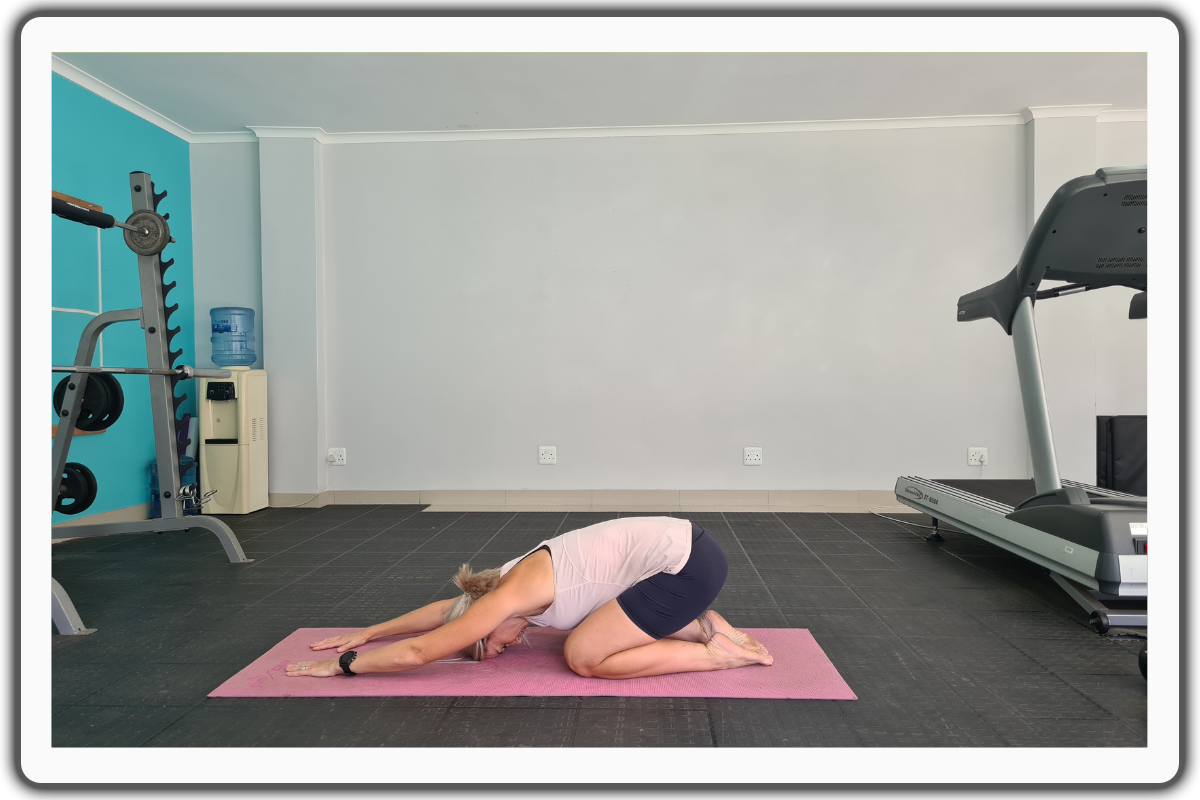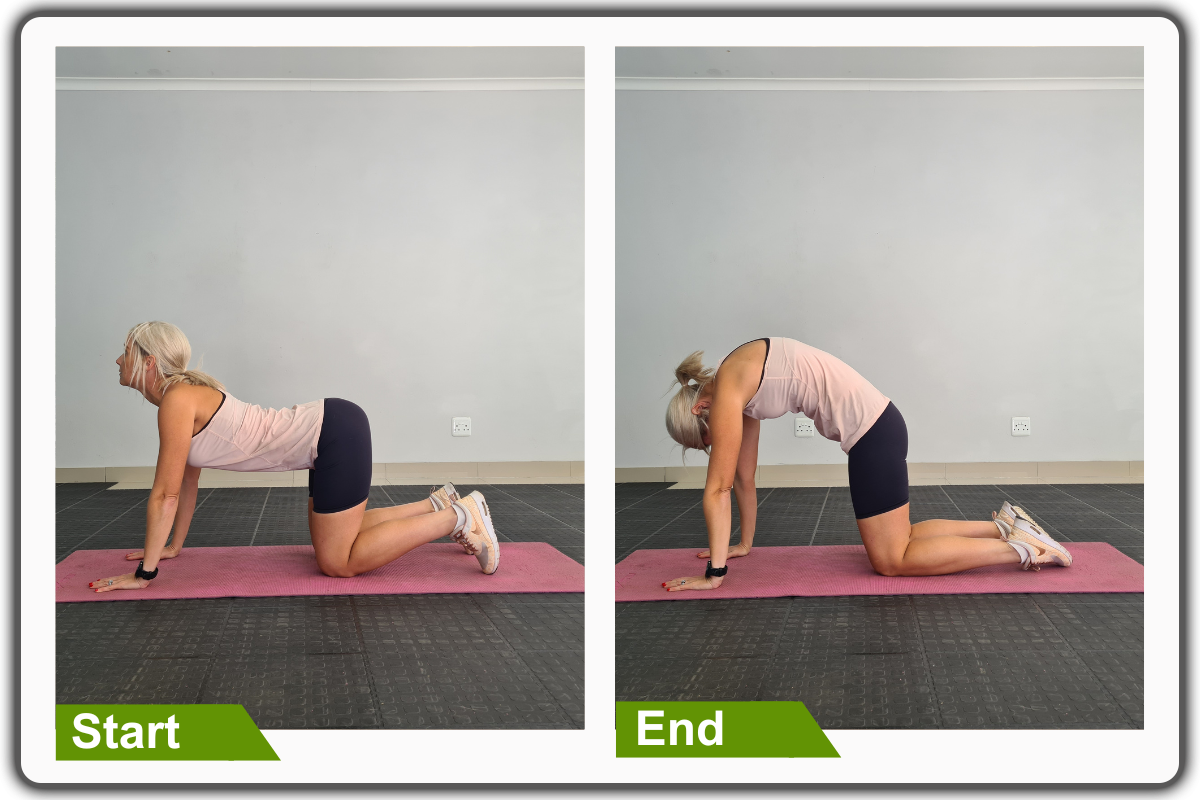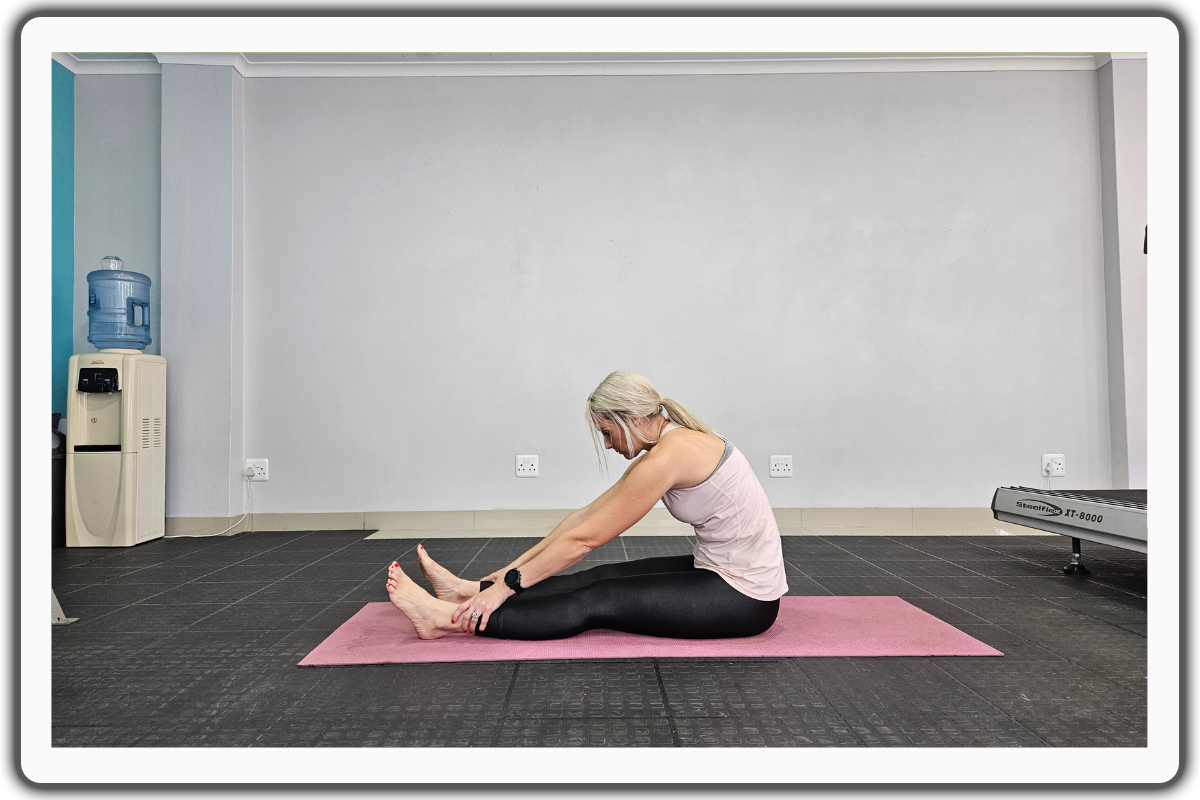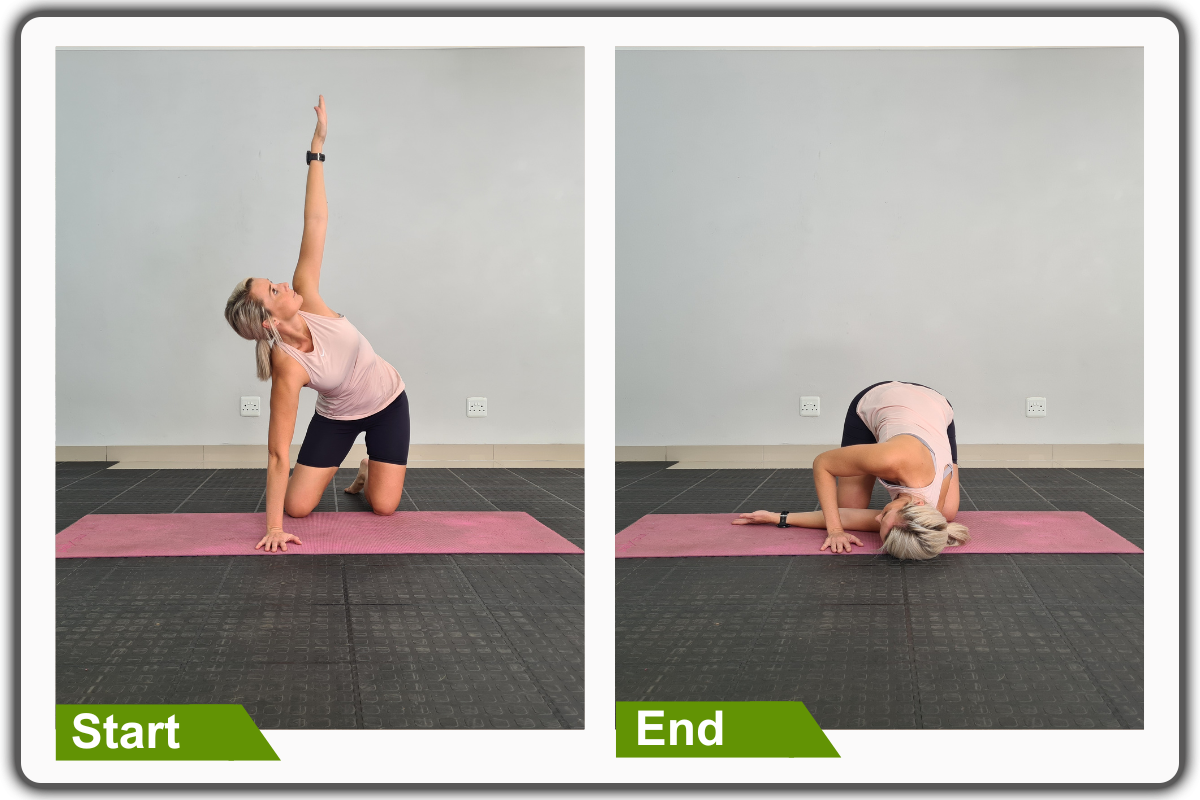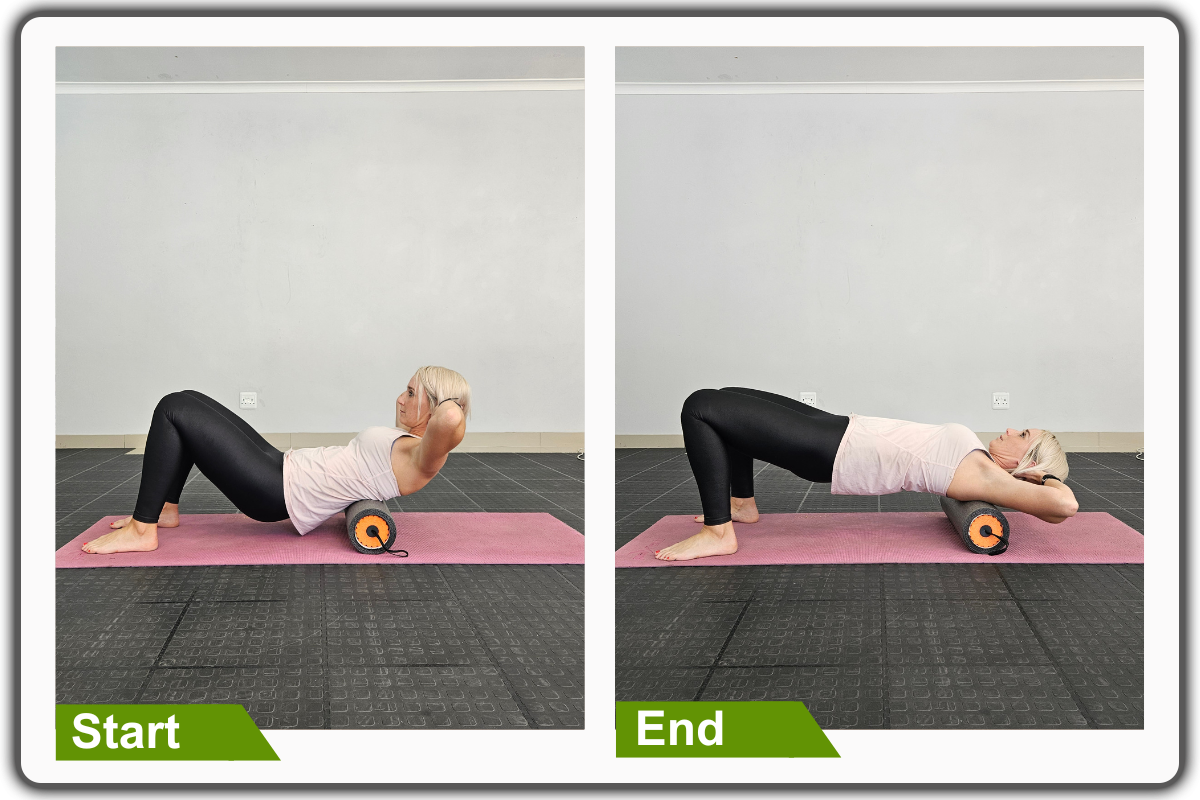Best Stretches for Upper Back Pain: Relief at Your Fingertips
Upper back pain can be very annoying and can make daily tasks hard to do. It can come from bad posture, muscle strain, or sitting too long. Finding relief is important. One of the best ways to ease and prevent upper back pain is by stretching.
In this blog, we'll look at some great stretches to help you feel better and keep your back healthy.
Understanding Upper Back Pain
Upper back pain [¹] often stems from issues related to the muscles, ligaments, and joints in the thoracic spine. Common causes include:
- Poor posture, especially from prolonged sitting or using electronic devices.
- Muscle strain from overuse or sudden movements.
- Injuries or trauma to the upper back.
- Underlying medical conditions like arthritis or herniated discs.
These factors can lead to symptoms such as stiffness, pain, and limited range of motion, significantly impacting daily life.
Causes of Upper Back Pain
Upper back pain can be caused by a variety of factors, each contributing to discomfort and limited mobility. One of the most common culprits is poor posture.
Slouching or slumping, especially during prolonged periods of sitting or standing, can strain the muscles in the upper back, leading to pain and stiffness.
Muscle strain is another frequent cause, often resulting from overuse or sudden movements that injure the muscles in this area.
Herniated discs in the spine can also cause upper back pain. When a disc herniates, it can put pressure on the surrounding nerves, causing significant discomfort. Osteoporosis, which weakens the bones, can also cause pain and discomfort in the upper back.
Additionally, scoliosis, which is an abnormal curve in the spine, can cause ongoing upper back pain because it puts uneven weight and pressure on the spinal muscles.
Knowing these causes can help you find out why your upper back hurts and take steps to fix it.
Upper Back Pain Symptoms
The signs of upper back pain can be very different based on what is causing it. Common symptoms include persistent pain or stiffness in the upper back, which can make everyday activities challenging. You might also experience limited mobility or flexibility. This makes it difficult to perform tasks that involve reaching or bending.
Muscle spasms or cramping in the upper back are also common, often occurring as a result of muscle strain or tension. Sometimes, you might feel numbness or tingling in your arms or hands, which can mean that nerves are involved. Weakness in the arms or hands can also accompany upper back pain, indicating that the pain might affect your overall upper body strength.
Spotting these symptoms early can help you get the right treatment and avoid more problems.
Benefits of Stretching for Upper Back Pain
Stretching is an easy and very good way to handle upper back pain. Here’s how it helps:
- Relieves muscle tension: Stretching helps to elongate tight muscles, reducing pain and discomfort.
- Improves flexibility: Regular stretching enhances flexibility, allowing for a greater range of motion.
- Enhances posture: Stretching strengthens and aligns the muscles, promoting better posture.
- Prevents future pain: By maintaining flexibility and muscle balance, stretching can help prevent future episodes of pain.
Preparing for Stretches
Before diving into your stretching routine, it’s crucial to prepare your body to ensure you get the most out of each stretch. Start with a light warm-up, such as a few minutes of cardio or dynamic stretching, to get your blood flowing and muscles ready. This helps prevent injury and makes your stretches more effective.
Find a quiet and comfortable space where you can focus on your stretches [²] without distractions. Using a mat or towel can provide cushioning and support for your joints, making the experience more comfortable. As you stretch, remember to breathe deeply. Taking deep breaths helps relax your mind and body, allowing you to stretch more effectively and reduce tension in your upper back.
Top Stretches for Upper Back Pain
1. Child’s Pose
Benefits: Stretches the spine, shoulders, and upper back muscles.
- For this upper back stretches, begin in an upright kneeling position on the floor with your knees closed together, maintaining good alignment with your upper body.
- Tighten your abdominal area, shift your hips back to your feet, and extend your arms forward.
- Lower your forehead to the floor, relaxing your mid-back area for a light stretch.
- Hold this position for several deep belly breaths, in through your nose and out through your mouth.
2- Cat-Cow Stretch
Benefits: Enhances mobility and relieves tension in the upper back.
- Begin in a 4-point position with your hands beneath your shoulders and your knees under your hips.
- Engage your core.
- Arch your mid-back as you lift your head upward.
- Then, tuck your tailbone in and round your spine as you lower your head downward.
- Repeat the sequence of movement as needed.
3. Seated Forward Bend
Benefits: Stretches the entire back, including the chest and upper back.
- For this upper back stretches, begin in an upright seated position on the floor with your legs straight, maintaining good alignment with your head, shoulders, and hips.
- Tighten your abdominal muscles.
- Hinge through your hips to bend your upper body forward, with your hands reaching toward your ankles.
- Hold the position for several deep belly breaths, in through your nose and out through your mouth.
4. Thread the Needle Stretch
Benefits: Targets the upper back, neck and shoulders, relieving tension and improving flexibility.
- Begin in a 4-point position with your hands beneath your shoulders and your knees under your hips.
- Engage your core, rotate your upper body upward, and extend your left arm toward the ceiling.
- Rotate back and slide your left arm under your body with your palm facing upward, lowering your shoulder to the floor.
- Use your right hand for balance.
- Rest the side of your head on the floor and your opposite hand either behind your back or to the floor to maintain your balance.
- Hold this position for several deep belly breaths, in through your nose and out through your mouth.
- Return to the starting position and repeat the movement on the opposite side.
5. Upper Back Foam Roller Stretch
Benefits: Provides a deep stretch and massage for the upper back muscles.
For this exercise, you may use a foam roller.
- For this upper back stretches, lie on your back with your knees bent and your feet flat on the floor.
- Place the foam roller under your body just above the hips while your hands are at the back of your head.
- Tighten your abdominal muscles and push from your heels to lift your hips up and slowly roll your upper body forward and back.
- Repeat the movement with 10 repetitions.
Tips for Effective Upper Back Stretches
- Warm-up first: Always do a quick warm-up before stretching to prepare your muscles.
- Focus on form: Proper form is crucial to avoid injury and maximize benefits.
- Hold stretches: Hold each stretch for at least 20-30 seconds.
- Consistency is key: Stretch regularly, ideally daily, for the best results.
Additional Remedies and Lifestyle Changes
In addition to stretching, consider these tips to enhance your back health:
- Exercise regularly: Incorporate strength training and aerobic exercises.
- Maintain good posture: Use ergonomic furniture and avoid slouching. Dr. Rahul Shah, MD, a board-certified orthopedic spine surgeon, emphasizes the importance of maintaining good posture and incorporating regular stretching and strengthening exercises to prevent and alleviate upper back pain
- Stay active: Avoid prolonged periods of inactivity.
- Consult a professional: If pain persists, seek advice from a healthcare provider.
Conclusion
Upper back pain [³] doesn't have to be with you all the time. By adding these stretches to your daily routine, you can feel better and make your back healthier.
Remember, doing them regularly is important, and listening to your body is crucial. Got any tips or experiences to share? We'd love to hear from you!
FAQs
Q: Why is my upper back hurting?
A: What Causes Upper Back Pain? Upper back pain often comes from small tears and swelling in the muscles, tendons, and ligaments of the upper back. It can also be caused by arthritis, herniated discs, narrowing of the spaces in the spine (vertebral stenosis), or misalignments in the thoracic (upper) or cervical (neck) spine.
Q: How should I sleep with upper back pain?
A: Flexing your knees and having a pillow between your legs can help align your spine, pelvis, and hips. This position takes the pressure off your spine. Use a full-length body pillow if you prefer.
Q: Can upper back pain be cured?
A: Many cases of upper back pain go away on their own within a few weeks with over-the-counter anti-inflammatory medicines, stretching, hot and cold therapy, and massage.
Q: When should I worry about upper back pain?
A: In rare cases, other health problems like heart attacks or lung injuries can cause pain in the upper back. You should call 911 if you have symptoms of a heart attack, such as upper back pain with chest pain, shortness of breath, sweating, jaw pain, or feeling sick.
References
1. Stretch Exercises: Reducing the Musculoskeletal Pain and Discomfort in the Arms and Upper Body of Echocardiographers
Wendy D. Christenssen, BSC, RDMS, RDCS, RVT, ACRView all authors and affiliations
Volume 17, Issue 3
https://doi.org/10.1177/87564790122250318
2. Comparative Study of Hands-On Therapy With Active Exercises vs Education With Active Exercises for the Management of Upper Back Pain
Author links open overlay panel
Mary S. Pesco MA a, Etsuo Chosa MD, PhD b, Naoya Tajima MD, PhD c
https://doi.org/10.1016/j.jmpt.2006.02.001
3. Pesco, M. S., Chosa, E., & Tajima, N. (2006). Comparative Study of Hands-On Therapy With Active Exercises vs Education With Active Exercises for the Management of Upper Back Pain. Journal of Manipulative and Physiological Therapeutics, 29(3), 228–235. https://doi.org/10.1016/j.jmpt.2006.02.001


